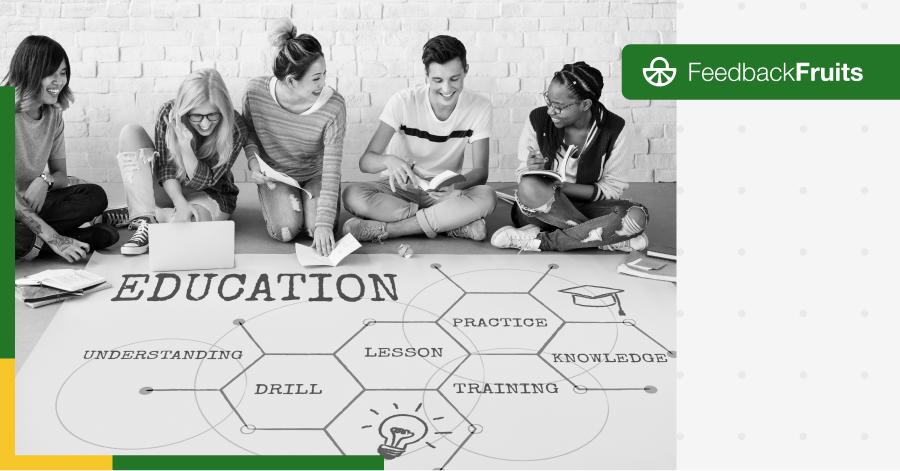[Free webinar] Unlock the power of group work with peer-to-peer learning
chevron_right

In this article, we will showcase 5 ways to create personalized learning spaces with pedagogical technology, based on the key student-centered learning principles as identified by Dr. Andrew Feldstein, Assistant Provost for Teaching Innovation and Learning Technologies at Fort Hays State University:
1. Respect for learners and their experience
2. Begin learning with the learner’s experience and subject matter
3. Creating and holding a hospitable place for learning
4. Making space for conversational learning
5. Making space for development of expertise
6. Making spaces for acting and reflecting
7. Making spaces for feeling and thinking
8. Making space for inside-out learning
9. Making a space for learners to take charge of their own learning

Personalized learning has been embraced as an effective educational strategy for addressing the diversity in students’ learning needs and interests. In this approach, students take ownership of their own learning by constructing their own educational pathway, from learning goals, through activities, to assessment.
Read more about personalized learning and differentiated learning
According to the International Society for Technology in Education (ISTE):
“Instead of education being something that happens to the learner, it is something that occurs as a result of what the student is doing, with the intent of creating engaged students who have truly learned how to learn.”
Personalized learning emphasizes student autonomy and self-efficacy – instead of asking the learner to align with the pre-established rules and learning objectives, it empowers them to modify their learning journey to suit their needs and goals.
Implementing individualized learning can, however, be complicated and cumbersome. Pedagogical technology can facilitate the design, delivery, scaling, and evaluation of the approach, but for it to be effective, it needs to put the needs of learners and educators in the center. According to Dr. Andrew Feldstein:
Technology does not make e-learning, but rather teachers and learners use technology to create the social space in which learning occurs.
Technology-enhanced personalized learning should not be designed around the technology – it is the technology that should be creating more opportunities for interaction and learning.

When determining personalized learning goals, learners should not be limited to the course content, but also encouraged to select and develop crucial 21st-century skills. Ensuring that these “soft” competencies flourish can be achieved through enabling authentic activities and assessment.
FeedbackFruits Peer Review and Group Member Evaluation tools provide a space for students to easily exchange peer feedback and evaluate their group members’ performance in a way that models future professional experiences, helping them develop key real-life skills in advance.
Though personalized learning involves students taking ownership of their own learning, appropriate support in the form of individual mentoring (or coaching) is critical, as it helps generate safe, entrusted spaces for continuous feedback, self-reflection, and remediation activities.
Mentorship can be issued in many ways, from providing constructive feedback, observing student analytics, to organizing discussion forums. Pedagogical technology can absolutely enhance each of these coaching methods.
FeedbackFruits Automated Feedback tool is another tool for teacher feedback. This LMS plug-in provides instant remarks on lower-order aspects of student academic writing, allowing teachers to focus on higher-order feedback tailored to individual needs. Furthermore, detailed analytic dashboard within each of these tools allow educators to detect pressure points and make timely interventions.
In order for students to be able to succeed in their individual goals, they should be encouraged to critically examine their own progress and consider possible adjustments to their learning paths.
With FeedbackFruits tools such as Self Assessment, students are able to evaluate their objectives and performance based on transparent, configurable criteria, which gives them more responsibility and clarifies future learning paths.
If the aim of assessment is to encourage growth and support individual goals, assessment methods need to reflect the entire learning process – both from the learner’s and from the teacher’s perspective. As such, it should not be limited to a one-time evaluation of a fixed point in time, but rather turn into an ongoing reflection on the students’ individual learning needs. This way, assessment can emphasize student learning as a whole – the journey, the progress, individual skills and objectives – rather than simply a passive knowledge intake.
To achieve this holistic approach to assessment, grading needs to concern multiple different aspects – Task/Product, Process, Self-Regulation and the Self – and come from all learning stakeholders – teacher-student, student-student, and self evaluation.FeedbackFruits’ Feedback tools, such as Automated Feedback, Group Member Evaluation, and Peer Review, support multi-level, holistic assessment to foster a growth mindset and improve learning outcomes.
Although every student’s learning journey is different, providing a common space for interaction and conversation remains crucial. To foster critical thinking and deep reflection, all diverse learners should be encouraged to meaningfully engage with the instructors, the course material, and each other – while still able to choose when, where, and how they learn.
FeedbackFruits tools such as Interactive Study Materials allow the students to interact with the study materials at their own pace while engaging in conversation with their peers and instructors through inline discussion points and questions in written, video and audio content.
When in charge of their own learning, students should also be encouraged to learn from each other and take responsibility for their peers’ learning as much as for their own. Fostering this collaborative spirit not only helps develop collaboration and communication skills but also cultivates a learning community, where every student feels motivated and included.
Technology such as FeedbackFruits Team-Based Learning tool can help foster meaningful collaboration through online discussions, either on a specific topic or on deliverables, as well as help implement evidence-based collaborative learning strategies.

Explore how to best implement active learning strategies with deep understanding of different modalities

FeedbackFruits announces partnerships with many institutions worldwide over the past 4 months

An overview of the state of competency-based education (CBE) in higher education around the world